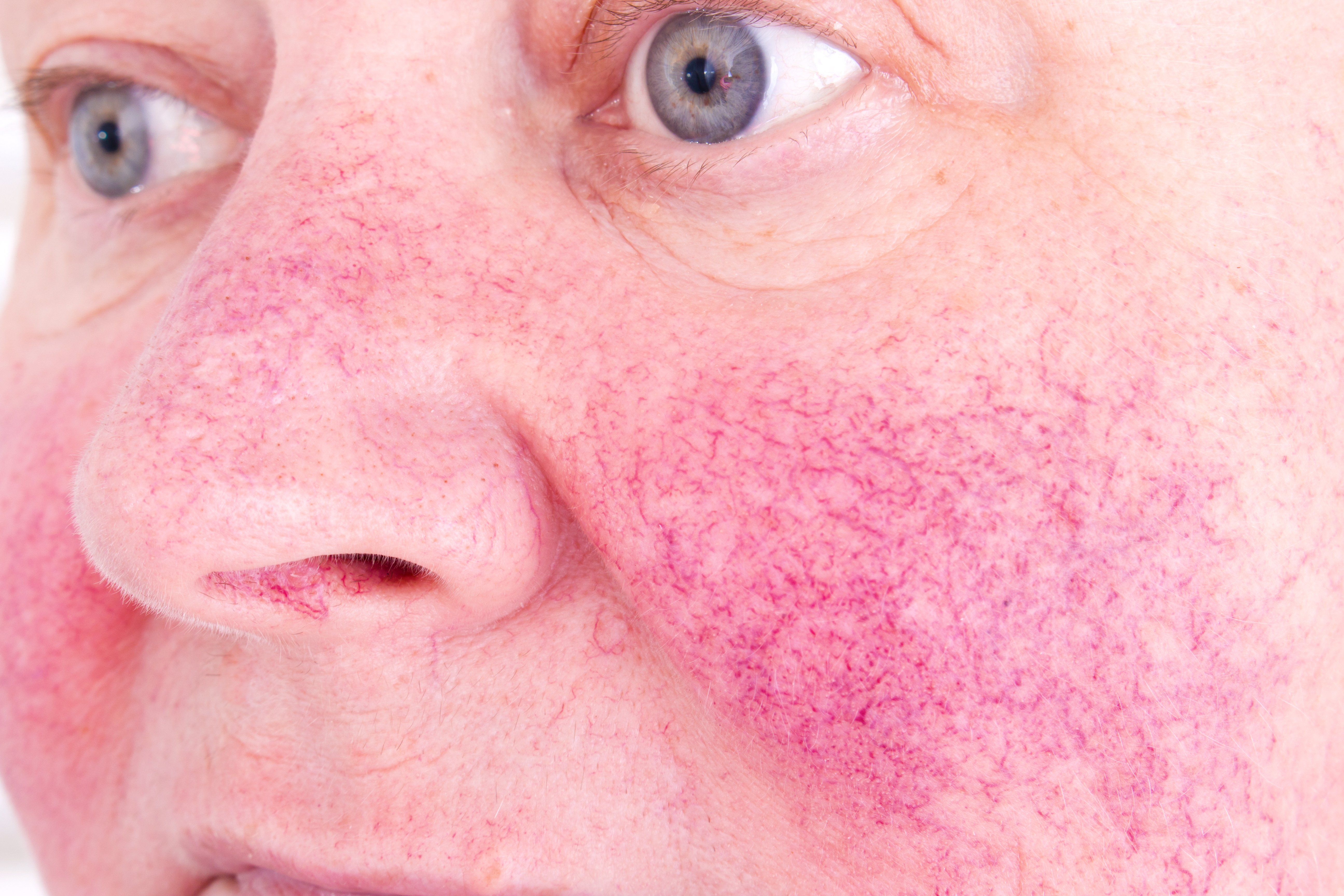- Case-Based Roundtable
- General Dermatology
- Eczema
- Chronic Hand Eczema
- Alopecia
- Aesthetics
- Vitiligo
- COVID-19
- Actinic Keratosis
- Precision Medicine and Biologics
- Rare Disease
- Wound Care
- Rosacea
- Psoriasis
- Psoriatic Arthritis
- Atopic Dermatitis
- Melasma
- NP and PA
- Skin Cancer
- Hidradenitis Suppurativa
- Drug Watch
- Pigmentary Disorders
- Acne
- Pediatric Dermatology
- Practice Management
- Prurigo Nodularis
- Buy-and-Bill
Publication
Article
Dermatology Times
Link between rosacea and systemic inflammatory diseases
Author(s):
Study suggests rosacea may be outcome of systemic inflammation with evidence linking the condition to cardiovascular disease, inflammatory bowel disease, and even some neurological diseases.
“We are getting increasing evidence that some of the inflammatory mediators that are released in the skin of rosacea patients and psoriasis patients as well can act systemically so something that is produced in the skin may circulate around and act on vessels of the heart or the lumen of the gut,” says Richard L. Gallo M.D., Ph.D. (Milan Lipowski - stock.adobe.com)

Research suggests that people with rosacea may have a genetic susceptibility to developing the condition and that environmental factors, in particular the microbiome, also play a role. Most importantly, however, there is mounting evidence that rosacea might be an outcome of systemic inflammation1
There is a small but significant association between systemic inflammatory diseases, some of which can be potentially serious, and rosacea. The greatest evidence is for links between rosacea and cardiovascular disease and inflammatory bowel disease, but there are also less strongly validated links with certain neurological diseases, in particular parkinsonism, but also dementia and Alzheimer’s.
RELATED: New options for rosacea management
A greater understanding of rosacea’s shared etiology will not only aid diagnosis and treatment for patients with rosacea, it could have wider clinical implications. If rosacea is shown to have high predictive value for the development of particular systemic disorders, it could provide a valuable early warning sign for these conditions, says Richard L. Gallo M.D., Ph.D., Irma Gigli Endowed Chair, Distinguished Professor and Founding Chairman, Department of Dermatology, University of California, San Diego.
“We are getting increasing evidence that some of the inflammatory mediators that are released in the skin of rosacea patients and psoriasis patients as well can act systemically so something that is produced in the skin may circulate around and act on vessels of the heart or the lumen of the gut,” he says. For example, there is now evidence implicating TH1 and TH17 cytokines and B cells in rosacea.2
RELATED: Effective OTC adjunct therapy
Unfortunately, Gallo adds, “A biochemical marker that would distinguish the inflammation of rosacea from other types of inflammation has not been clearly identified.”
A biochemical identifier unique to rosacea would enable dermatologists to easily confirm suspected diagnosis and monitor disease progression, and researchers to assess the potential of new candidate therapies.
Other than improvements in therapy this would be the most useful step forward that could be made in our knowledge of the condition, he says.
While, there are a lot of therapies for rosacea, including antimicrobial approaches, vasoactive approaches and physical approaches such as lasers, Gallo says, “We still could do better, much better.”
Potential new therapies in the pipeline include protease modification. “It is a different approach which could add to the efficacy of existing regimens,” he explains. The rationale of protease modification is to interrupt the signalling pathway that generates the proinflammatory molecules by either blocking the trigger or blocking the pathway.
At present the pathophysiology of flushing and blushing, the interaction between the nervous and immune systems during neuroinflammation (flushing, erythema), and the immune responses (erythema, papules, pustules) remains unclear.
This month, Gallo and colleagues will present an abstract to the Society for Investigative Dermatology meeting in Chicago on the mechanism connecting vascular inflammation with increased sensitivity to light. “One of the most common factors that patients report for increased symptoms in rosacea is ultraviolet light exposure and we are reporting on a biochemical explanation for that,” he says.
RELATED: Effective OTC adjuncts to prescription rosacea therapy
Gallo emphasises that rosacea also occurs in individuals with darker skin phototypes, but perhaps is more likely to be missed.
“A few reports have suggested that the centrofacial erythema that characterises rosacea has been vastly unappreciated in darker skinned individuals,” he notes. “So, it may not be that the incidence is low in that pigment type but more a diagnostic problem or a detection problem.”
In individuals with darker skin types, erythematous signs can appear as a dusky brown discoloration, so symptoms such as burning, stinging, flushing, papules, and pustules might be more appropriate indicators of rosacea than primary centrofacial erythema.
Both the National Rosacea Society and American Acne and Rosacea Society offer funding for research to further understanding and management of rosacea, and Gallo encourages anyone with an idea for studies to apply for the grants.
References:
1. Gallo RL, Granstein RD, Kang S, Mannis M, Steinhoff M, Tan J, Thiboutot D.Rosacea comorbidities and future research: The 2017 update by the National Rosacea Society Expert Committee. J Am Acad Dermatol. 2017 http://dx.doi.org/10.1016/j.jaad.2017.06.150
2. Buhl T, Sulk M, Nowak P, et al. Molecular and morphological characterization of inflammatory infiltrate in rosacea reveals activation of Th1/Th17 pathways. J Invest Dermatol. 2015;135: 2198-2208.






